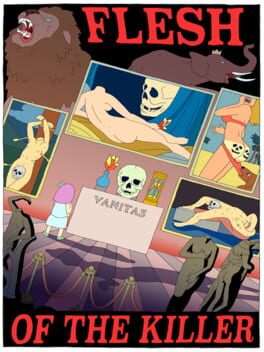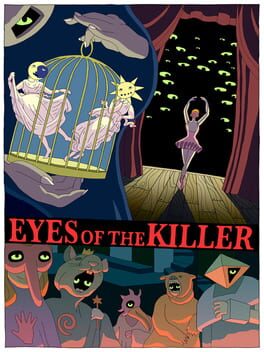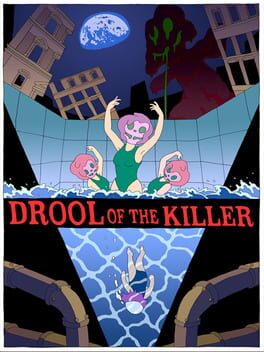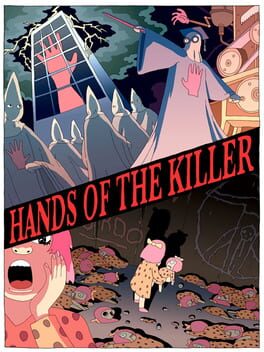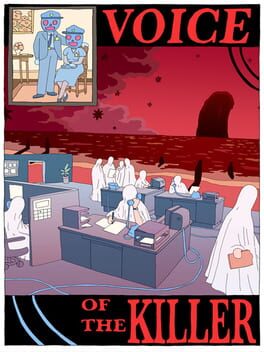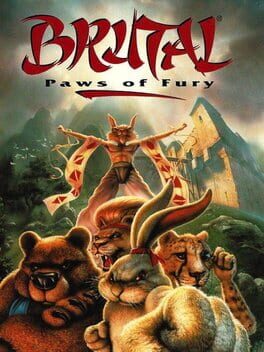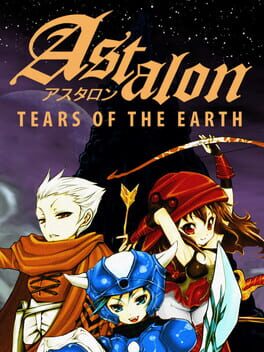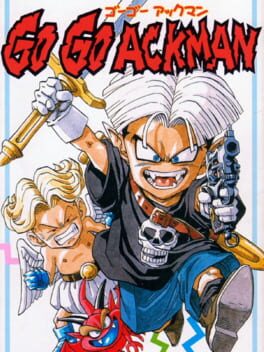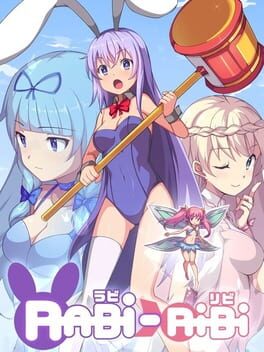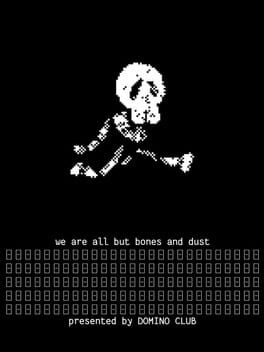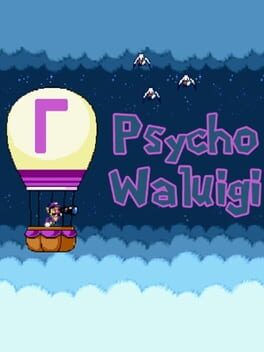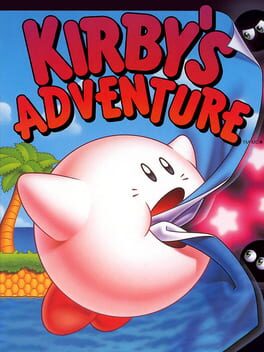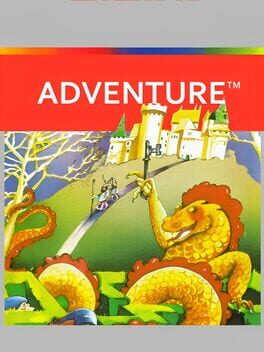2021
2021
2021
2020
2020
2023
1994
In terms of visual aesthetics, the game is exceptionally well-crafted. The pixel art is highly detailed, though I suspect there's some issues with the hurtbox in certain sprites and the hitbox of specific attacks. The animations are well-executed, and the lighting is particularly evocative, especially in some key scenes. I also appreciate the interconnectedness of the world; in this aspect, it truly embodies the metroidvania genre. Some of the power-ups, essential for smoother traversal, are cleverly concealed, and many areas crucial for progression remain inaccessible until obtaining these enhancements.
However, my overall assessment heavily leans towards the negative. The narrative is horribly fragmented, and the few moments of interaction with the party are excessively repetitive, failing to take any opportunity to develop the characters: the same two-three sketches are recycled each time, and these interactions can only be activated once after each boss fight. In this regard, the game somewhat reminded me of "In Stars and Time" but fell short of reaching the quality of its storytelling. I found the story itself unengaging, possibly due to the overly simplistic writing of the characters.
The level design is generally well-executed, yet some issues caught my attention. For instance, the arena of the second Gorgon makes it challenging for the boss to complete one of its combos, and a specific attack is trivialized by certain tiles that can always provide a very easy cover. Consequently, part of the boss fight becomes too simplistic due to the arena itself
Speaking of level design, I often found it frustrating, especially when combined with key placement. Keys are necessary to open numerous doors scattered throughout the map, and too many times I felt disoriented, unsure of where to find what I needed or where to proceed. The minimap, in this context, was confusing and lacked sufficient information. After playing for an hour or two, it's possible to purchase important items, including one that displays the location of still-locked doors on the map. However, this awareness rarely proved helpful for me; in fact, it often exacerbated the issue making me even more confused due to the lack of other infos
Let's delve into the shop-feature, where the developers seem to have drawn inspiration from roguelites. The game, however, never embraces that shape; instead, it introduces the somewhat bothersome idea of allowing the purchase of items and enhancements only after death. This proved irritating to me since death itself serves no purpose other than this. At most, it serves a narrative function, but I am confident that a more effective approach could have been devised. Admittedly, after a while, it becomes possible to purchase an item that opens the shop when standing in front of certain idols scattered on the map. Yet, in my opinion, these idols are too few, and the opportunity to do this comes too late.
At first, the boss fights seemed enjoyable, only to become entirely trivial once acquiring power-ups. For instance, one of the later humanoid bosses is completely annihilated by the ability to evade any of its attacks by hopping indefinitely on the side walls. None of his attacks can counter this, and the arena is entirely flat, restricting any creative reactions. While there's an option to disable one's own enhancements, I believe it's the developer's responsibility to bring challenge in a fight, rather than leaving this responsibility to the player
Another significant issue for me is that the game, for too many hours, fails to effectively integrate the individual party members' properties with environmental puzzles and their combat potentials. The warrior is utterly useless for two-thirds of the game, and I resorted to using him solely to cut vines (10 of them in 10 hours of gameplay, I think). I used the wizard a bit more, but he also suffered from being minimally useful in the early hours of the game. The archer, on the other hand, is overpowered from the start. Dealing excellent damage from a distance (remaining almost always safe), being able to climb walls (useful for both puzzles and combat, compared to the other two characters), and jumping slightly higher than the rest of the party. I had no reason to use the wizard and the warrior, this game really is not "Trine" at all. Moreover, only towards the conclusion we are introduced to some spectral enemies that can be damaged only by the wizard
The first half of the game was, therefore, frustrating especially due to the fact that the player HAS TO RETURN to a campfire EVERY TIME to switch characters – an inconvenient and displeasing aspect considering the lack of balance in the party. Finally, a bell is obtained, allowing the flexibility to change characters at will, making the game more dynamic and less methodical, albeit still not dynamic enough. To traverse the map, I still predominantly used the archer, deploying the other two exclusively to dispatch certain enemies more quickly. Furthermore, their power-ups were essentially useless to me. The wizard's gliding ability was never used to traverse the map, and the warrior's dash functioned similarly, proving also ineffective in combat.
Ah, and of course: fighting almost any of the bosses with the mage or the warrior is too damn difficult. Again, I used the archer almost everytime
However, my overall assessment heavily leans towards the negative. The narrative is horribly fragmented, and the few moments of interaction with the party are excessively repetitive, failing to take any opportunity to develop the characters: the same two-three sketches are recycled each time, and these interactions can only be activated once after each boss fight. In this regard, the game somewhat reminded me of "In Stars and Time" but fell short of reaching the quality of its storytelling. I found the story itself unengaging, possibly due to the overly simplistic writing of the characters.
The level design is generally well-executed, yet some issues caught my attention. For instance, the arena of the second Gorgon makes it challenging for the boss to complete one of its combos, and a specific attack is trivialized by certain tiles that can always provide a very easy cover. Consequently, part of the boss fight becomes too simplistic due to the arena itself
Speaking of level design, I often found it frustrating, especially when combined with key placement. Keys are necessary to open numerous doors scattered throughout the map, and too many times I felt disoriented, unsure of where to find what I needed or where to proceed. The minimap, in this context, was confusing and lacked sufficient information. After playing for an hour or two, it's possible to purchase important items, including one that displays the location of still-locked doors on the map. However, this awareness rarely proved helpful for me; in fact, it often exacerbated the issue making me even more confused due to the lack of other infos
Let's delve into the shop-feature, where the developers seem to have drawn inspiration from roguelites. The game, however, never embraces that shape; instead, it introduces the somewhat bothersome idea of allowing the purchase of items and enhancements only after death. This proved irritating to me since death itself serves no purpose other than this. At most, it serves a narrative function, but I am confident that a more effective approach could have been devised. Admittedly, after a while, it becomes possible to purchase an item that opens the shop when standing in front of certain idols scattered on the map. Yet, in my opinion, these idols are too few, and the opportunity to do this comes too late.
At first, the boss fights seemed enjoyable, only to become entirely trivial once acquiring power-ups. For instance, one of the later humanoid bosses is completely annihilated by the ability to evade any of its attacks by hopping indefinitely on the side walls. None of his attacks can counter this, and the arena is entirely flat, restricting any creative reactions. While there's an option to disable one's own enhancements, I believe it's the developer's responsibility to bring challenge in a fight, rather than leaving this responsibility to the player
Another significant issue for me is that the game, for too many hours, fails to effectively integrate the individual party members' properties with environmental puzzles and their combat potentials. The warrior is utterly useless for two-thirds of the game, and I resorted to using him solely to cut vines (10 of them in 10 hours of gameplay, I think). I used the wizard a bit more, but he also suffered from being minimally useful in the early hours of the game. The archer, on the other hand, is overpowered from the start. Dealing excellent damage from a distance (remaining almost always safe), being able to climb walls (useful for both puzzles and combat, compared to the other two characters), and jumping slightly higher than the rest of the party. I had no reason to use the wizard and the warrior, this game really is not "Trine" at all. Moreover, only towards the conclusion we are introduced to some spectral enemies that can be damaged only by the wizard
The first half of the game was, therefore, frustrating especially due to the fact that the player HAS TO RETURN to a campfire EVERY TIME to switch characters – an inconvenient and displeasing aspect considering the lack of balance in the party. Finally, a bell is obtained, allowing the flexibility to change characters at will, making the game more dynamic and less methodical, albeit still not dynamic enough. To traverse the map, I still predominantly used the archer, deploying the other two exclusively to dispatch certain enemies more quickly. Furthermore, their power-ups were essentially useless to me. The wizard's gliding ability was never used to traverse the map, and the warrior's dash functioned similarly, proving also ineffective in combat.
Ah, and of course: fighting almost any of the bosses with the mage or the warrior is too damn difficult. Again, I used the archer almost everytime
1994
2016
Allora, Rabi-Ribi è oggettivamente fatto parecchio bene lato gameplay. Il level design a mio avviso non è praticamente mai particolarmente buono, rimane sotto la varietà e qualità generale di quello in Blasphemous II, ma rimane funzionale alla libertà dell'esplorazione
Vado a specificare che l'esplorazione in sé non m'è piaciuta poi tanto fatta eccezione per un paio di stage. Come dicevo, lato gameplay Rabi-Ribi è ben fatto ma a causa del level design stesso la maggior parte delle volte l'utilizzo delle proprie abilità per attraversare una sezione è quasi ininfluente - mi sono trovato a usarli quasi solo lì dove sono obbligatori. Infatti, teoricamente il gioco si potrebbe praticamente completare senza aver ottenuto nulla (forse eccetto le scarpe che permettono di saltare più in alto, ma dovrei controllare).
Poi, non ho mai percepito alcuna distintività: trovarsi nell'area vulcanica è più o meno la stessa cosa che trovarsi nella foresta o nelle grotte ghiacciate. Belli invece i background, in genere. Forse un'eccezione a tutto questo è il livello ambientato nel cyberspazio
Lo stesso discorso lo applico alle creature nemiche: anche laddove c'erano delle creature luogo-specifiche, erano sempre di una bruttezza e, per il moveset, di una banalità disarmanti.
Mi fanno cagare anche i NPC, per character design e scrittura
La scrittura, per me, è atroce e disprezzo anche la storia in sé: non posso neanche scendere nei dettagli perché molte cose le ho direttamente skippate. Poi magari a causa di questo atteggiamento mi sarò anche perso certe istruzioni, perché ho capito come fare per consumare oggetti di cura solo a 5 ore dall'inizio.
Le cose buone da dire sono comunque molte. C'è un sistema di progressione più vicino a certi giochi di ruolo, per cui l'utilizzo costante delle proprie armi ne comporta il miglioramento e level up: questo ha come esito un aumento del danno, della velocità, l'acquisizione di una combo a seconda del livello raggiunto. In giro per la mappa è possibile trovare tutta una serie di oggetti che, come in ogni metroidvania che si rispetti, permettono di semplificare l'esplorazione e di accedere a nuove aree: che si tratti del doppio salto, di un aumento dell'altezza raggiungibile con lo stesso, della scivolata, etc.
Per i completisti poi questo gioco sarà una manna dal cielo. Io non ho nessuna intenzione di collezionare manco la metà degli achievement ottenibili (o meglio, a me degli achievement non frega in nessuna maniera), ma credo che per farlo durante la prima partita bisognerebbe investirci almeno una trentina di ore
Particolare nota di merito per quanto mi riguarda va proprio alle boss-fight: diversissime, numerosissime e molte di queste difficili in culo, con moveset che ci si aspetterebbe da un bullet-hell. Nonostante la difficoltà, c'è sempre la possibilità di rinascere esattamente fuori l'arena di combattimento (che non è mai nulla di particolare, tutta l'attenzione è stata data esclusivamente al moveset dei vari boss). Inoltre, dopo alcune sconfitte, il gioco stesso chiede se si vuole abbassare la difficoltà. Apprezzabile.
Non intendo fare una seconda partita e non ho letto cose a riguardo, ma credo che, data la libertà di approccio all'esplorazione che si raggiunge da un certo punto, sia anche possibile affrontare molti boss seguendo le proprie preferenze in termini di priorità
Per il resto non ho molto da dire. La grafica, animazione, audo design e ost mi sono tra l'indifferente e il disprezzo. Un'altra nota positiva è la hurtbox, molto piccola come accade in molti shoot 'em up e molto precisa: lo sprite del personaggio è ingannevolmente molto più grande della hurtbox vista l'elevata quantità di sezioni bullet hell, e per ovviare a questo problema la hitbox delle creature generiche è più grossa dei loro sprite così da avere l'illusione di una effettiva collisione nel caso ci si dovesse finire addosso
Vado a specificare che l'esplorazione in sé non m'è piaciuta poi tanto fatta eccezione per un paio di stage. Come dicevo, lato gameplay Rabi-Ribi è ben fatto ma a causa del level design stesso la maggior parte delle volte l'utilizzo delle proprie abilità per attraversare una sezione è quasi ininfluente - mi sono trovato a usarli quasi solo lì dove sono obbligatori. Infatti, teoricamente il gioco si potrebbe praticamente completare senza aver ottenuto nulla (forse eccetto le scarpe che permettono di saltare più in alto, ma dovrei controllare).
Poi, non ho mai percepito alcuna distintività: trovarsi nell'area vulcanica è più o meno la stessa cosa che trovarsi nella foresta o nelle grotte ghiacciate. Belli invece i background, in genere. Forse un'eccezione a tutto questo è il livello ambientato nel cyberspazio
Lo stesso discorso lo applico alle creature nemiche: anche laddove c'erano delle creature luogo-specifiche, erano sempre di una bruttezza e, per il moveset, di una banalità disarmanti.
Mi fanno cagare anche i NPC, per character design e scrittura
La scrittura, per me, è atroce e disprezzo anche la storia in sé: non posso neanche scendere nei dettagli perché molte cose le ho direttamente skippate. Poi magari a causa di questo atteggiamento mi sarò anche perso certe istruzioni, perché ho capito come fare per consumare oggetti di cura solo a 5 ore dall'inizio.
Le cose buone da dire sono comunque molte. C'è un sistema di progressione più vicino a certi giochi di ruolo, per cui l'utilizzo costante delle proprie armi ne comporta il miglioramento e level up: questo ha come esito un aumento del danno, della velocità, l'acquisizione di una combo a seconda del livello raggiunto. In giro per la mappa è possibile trovare tutta una serie di oggetti che, come in ogni metroidvania che si rispetti, permettono di semplificare l'esplorazione e di accedere a nuove aree: che si tratti del doppio salto, di un aumento dell'altezza raggiungibile con lo stesso, della scivolata, etc.
Per i completisti poi questo gioco sarà una manna dal cielo. Io non ho nessuna intenzione di collezionare manco la metà degli achievement ottenibili (o meglio, a me degli achievement non frega in nessuna maniera), ma credo che per farlo durante la prima partita bisognerebbe investirci almeno una trentina di ore
Particolare nota di merito per quanto mi riguarda va proprio alle boss-fight: diversissime, numerosissime e molte di queste difficili in culo, con moveset che ci si aspetterebbe da un bullet-hell. Nonostante la difficoltà, c'è sempre la possibilità di rinascere esattamente fuori l'arena di combattimento (che non è mai nulla di particolare, tutta l'attenzione è stata data esclusivamente al moveset dei vari boss). Inoltre, dopo alcune sconfitte, il gioco stesso chiede se si vuole abbassare la difficoltà. Apprezzabile.
Non intendo fare una seconda partita e non ho letto cose a riguardo, ma credo che, data la libertà di approccio all'esplorazione che si raggiunge da un certo punto, sia anche possibile affrontare molti boss seguendo le proprie preferenze in termini di priorità
Per il resto non ho molto da dire. La grafica, animazione, audo design e ost mi sono tra l'indifferente e il disprezzo. Un'altra nota positiva è la hurtbox, molto piccola come accade in molti shoot 'em up e molto precisa: lo sprite del personaggio è ingannevolmente molto più grande della hurtbox vista l'elevata quantità di sezioni bullet hell, e per ovviare a questo problema la hitbox delle creature generiche è più grossa dei loro sprite così da avere l'illusione di una effettiva collisione nel caso ci si dovesse finire addosso
2011
'Sto gioco è un lavoro ammirevole da parte di un singolo sviluppatore. 30 stage, quasi completamente differenti, in 6 mondi. Ancor più eccellente se contestualizzato all'anno di uscita
Pur essendo lineare, permette spesso una certa varietà nell'approccio grazie al potere psichico di Waluigi: premendo un tasto, è possibile catturare un oggetto o un nemico in gioco e lanciarlo contro qualsiasi cosa sia dotata di una hurtbox; nel caso in cui si catturassero nemici dotati di particolari capacità (es.: le piante carnivore che sparano sferette di fuoco) è possibile farne uso a proprio comodo fino all'esaurimento della loro scorta di energia
Il level design è ben fatto: le aree hanno una buona varietà, i livelli sono strutturati in modo tale da sfruttare spesso tanto la verticalità quanto l'orizzontalità e ci sono anche alcune gemme in giro per gli stage che restituiscono un buon bottino
Purtroppo la mia esperienza rimane uccisa dal fatto che giocarlo su PC è stato veramente un dito in culo a causa dei comandi. Non per il platforming in sé, che funziona molto bene anche grazie alla possibilità di rimbalzare sulle creature nemiche e alla presenza di melanzane che danno a Waluigi capacità di salto aggiuntive in grado di fargli raggiungere più facilmente certe piattaforme o di evitare più facilmente file di nemici (nella fattispecie, il doppio salto e planata). Anzi, il platforming è a tratti fin troppo permissivo: cadere in una fossa senza fondo non decreta la morte di Waluigi; al contrario, rimbalza ogni volta in alto con un salto della Madonna per permettere al giocatore di atterrare su una superficie vicina, al costo di un punto vita)
La colpa, per quanto mi riguarda, sta nel potere psichico stesso: mi sono trovato in difficoltà dall'inizio alla fine nel tentativo di ruotare il puntatore nel modo corretto, finendo spesso e volentieri col subire un botto di danni perché sono stato incapace di schivare, controllare il potere psichico e contrattaccare allo stesso tempo. In generale il gioco è più che valido, ma non penso ci giocherei mai più
Il finale è meraviglioso
Pur essendo lineare, permette spesso una certa varietà nell'approccio grazie al potere psichico di Waluigi: premendo un tasto, è possibile catturare un oggetto o un nemico in gioco e lanciarlo contro qualsiasi cosa sia dotata di una hurtbox; nel caso in cui si catturassero nemici dotati di particolari capacità (es.: le piante carnivore che sparano sferette di fuoco) è possibile farne uso a proprio comodo fino all'esaurimento della loro scorta di energia
Il level design è ben fatto: le aree hanno una buona varietà, i livelli sono strutturati in modo tale da sfruttare spesso tanto la verticalità quanto l'orizzontalità e ci sono anche alcune gemme in giro per gli stage che restituiscono un buon bottino
Purtroppo la mia esperienza rimane uccisa dal fatto che giocarlo su PC è stato veramente un dito in culo a causa dei comandi. Non per il platforming in sé, che funziona molto bene anche grazie alla possibilità di rimbalzare sulle creature nemiche e alla presenza di melanzane che danno a Waluigi capacità di salto aggiuntive in grado di fargli raggiungere più facilmente certe piattaforme o di evitare più facilmente file di nemici (nella fattispecie, il doppio salto e planata). Anzi, il platforming è a tratti fin troppo permissivo: cadere in una fossa senza fondo non decreta la morte di Waluigi; al contrario, rimbalza ogni volta in alto con un salto della Madonna per permettere al giocatore di atterrare su una superficie vicina, al costo di un punto vita)
La colpa, per quanto mi riguarda, sta nel potere psichico stesso: mi sono trovato in difficoltà dall'inizio alla fine nel tentativo di ruotare il puntatore nel modo corretto, finendo spesso e volentieri col subire un botto di danni perché sono stato incapace di schivare, controllare il potere psichico e contrattaccare allo stesso tempo. In generale il gioco è più che valido, ma non penso ci giocherei mai più
Il finale è meraviglioso
1993
2023
1979
